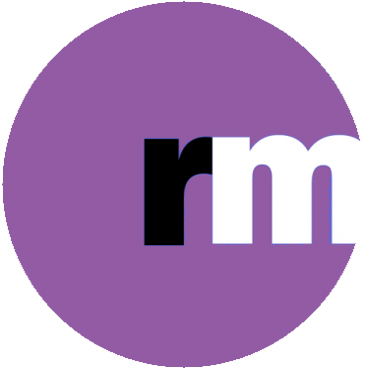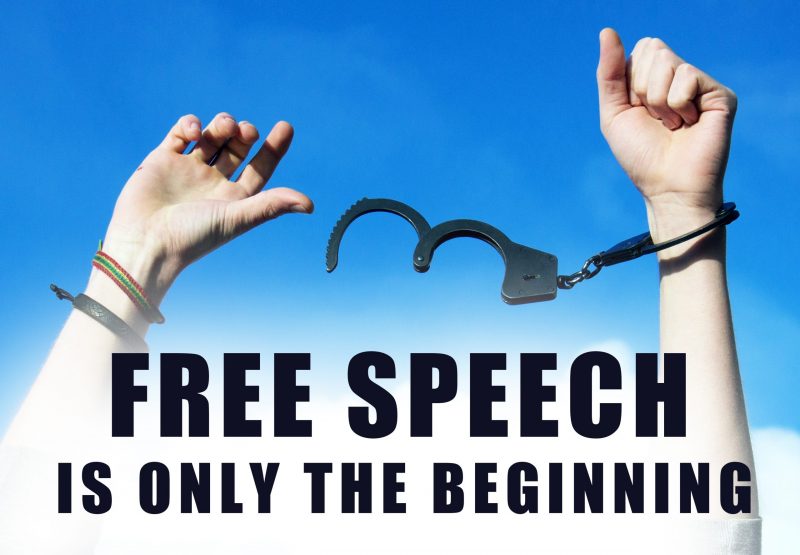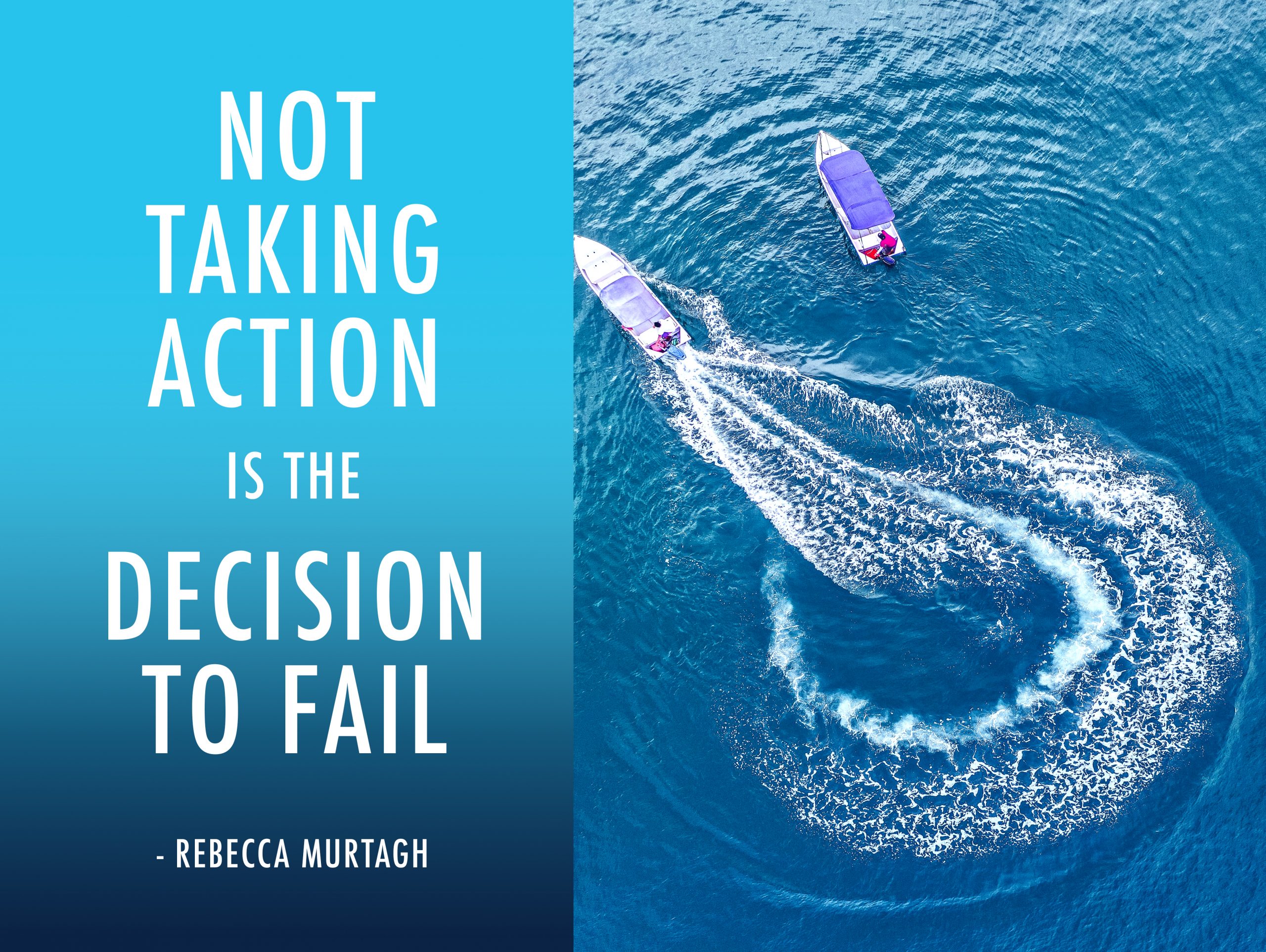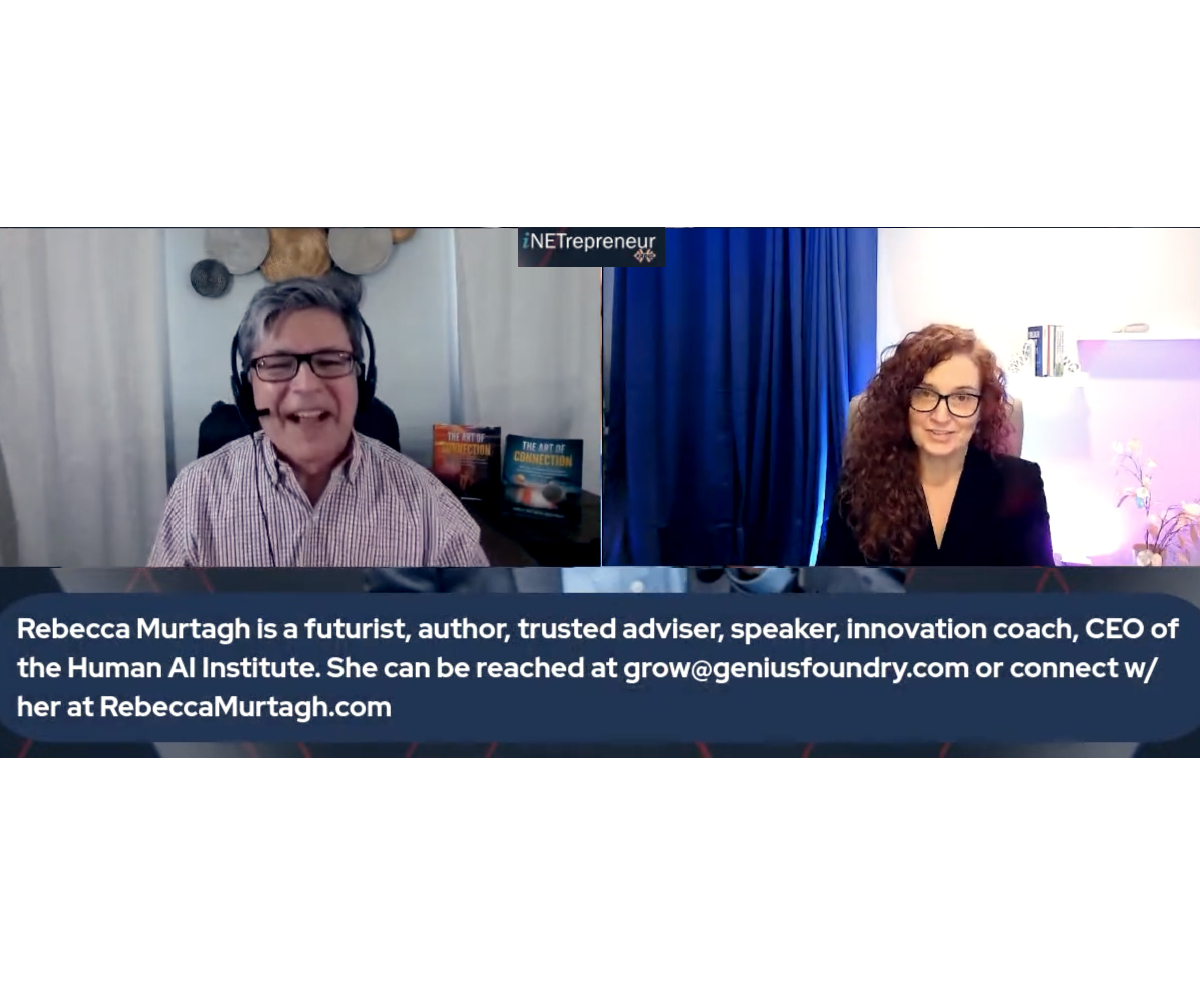Why Elon Musk’s Impact on Twitter Will Far Exceed Freedom of Speech
October 27, 2022 – Today Elon Musk became the owner of the social media platform Twitter. Musk has been very public about his commitment to free speech. Musk’s acquisition of Twitter impacts far more than freedom speech. Most people are unaware how Twitter directly impacts them – even if they’ve never used the platform, or any social media app.
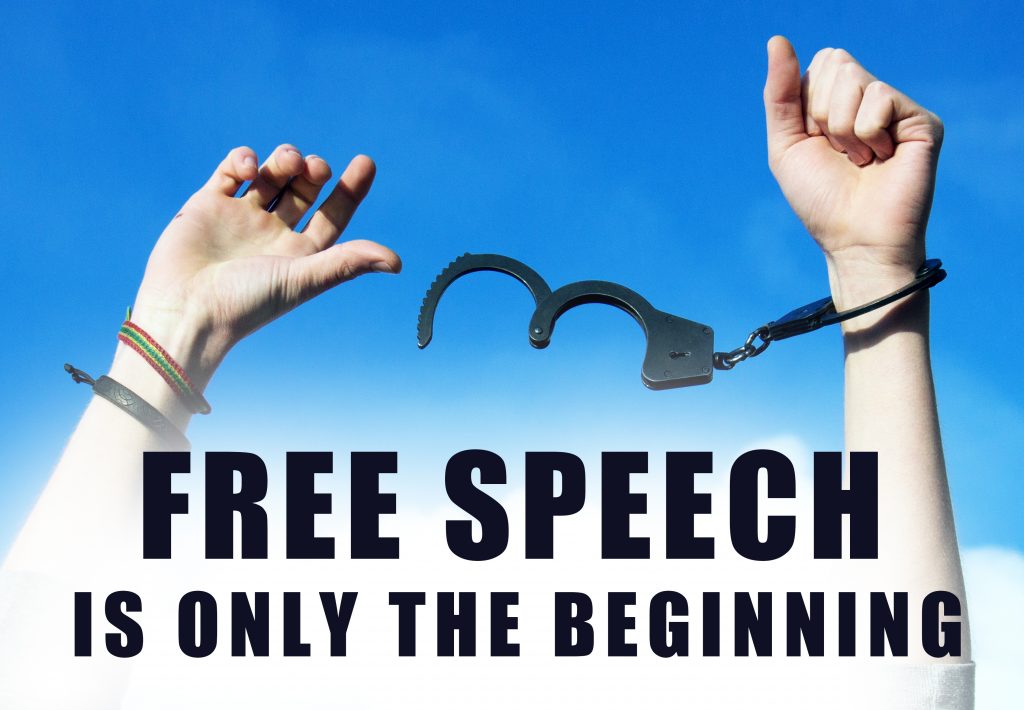
Early 2022 Elon Musk, the richest man in the world announced his intent to acquire Twitter. After his offer to acquire Twitter was accepted, Elon Musk explained in a tweet, “Free speech is the bedrock of a functioning democracy, and Twitter is the digital town square where matters vital to the future of humanity are debated.”

The First Amendment is part of the Bill of Rights added to the United States Constitution on December 15, 1791, that protects basic freedoms in the United States including freedom of religion, freedom of speech, freedom of the press, the right to assemble, and the right to petition the government.
Media outlets around world have speculated whether freedom of speech really is important to the Tesla Inc. and SpaceX CEO.
Does Freedom of Speech Really Matter to Elon Musk?
Did Elon Musk really invest approximately $44 Billion U.S. Dollars (approximately 15% of his wealth of around $264.6 billion in US dollars) to protect the 1st Amendment of the U.S. Constitution on a social media platform?
The answer is yes, according to his own statements. However, I believe Elon Musk’s interest in protecting freedom of speech goes deeper than the public perception that he simply wants people to be able to say whatever they want in the “public square” without being censored, throttled, or canceled.
It is highly likely Elon Musk wants to encourage free speech on Twitter because it is much more than a social media platform.
Elon Musk’s Twitter Impacts Just About Everyone, Including You
To understand how Musk’s acquisition of Twitter will extend beyond protecting the right to free speech, it may help to explain the role Twitter plays in the world.
Social Media
Twitter was launched in 2006 as a social media microblogging platform and went public in 2013.
Elon Musk joined in 2009. Twitter.com is the 9th most visited website globally according to Hootsuite.
Twitter by the numbers
Twitter has nearly 400 million users. Over 200 million active daily users around the world to engage with others on the platform in 280 characters or less.
Over 500 million tweets are posted each day. That translates to 6,000 Tweets per second, 350,000 Tweets per minute, and around 200 billion Tweets per year.
Communications
Twitter is used by government agencies, brands, customer service departments, utilities, politicians, celebrities, CEO’s, branches of the military, and millions of professionals and individuals as a communications channel. Twitter is a free distribution channel for sharing breaking news, press releases, opinions, endorsements, customer service communications, introduction of new products and services, career updates, and tour dates, to engagements, baby gender reveals, vacation photos, makeup tips, promotions, political candidacy, activism, and everything in between. Twitter also offers a variety of paid options for content creators to get their messages out to target audiences.
Emergencies and Natural Disasters
Victims of natural disasters like hurricanes, earthquakes, tornados, floods, etc. often use Twitter to ask for help. Twitter enables communities, governments and first responders disseminate official information during natural disasters and emergencies and respond to pleas for help. Twitter and other social media platforms become lifelines to victims when phone lines, television, radio and/or cell towers are overloaded or out of service.
Sports
In 2017 Twitter began featuring sports updates at the top of twitter feeds that displayed “real time” scores, game updates, breaking news, etc. On any given day fans can watch game updates as they happen, engage with the official twitter account for their favorite team, other fans, and related accounts to purchase tickets or merchandise.
Entertainment
Twitter has become an integral part of the entertainment industry.
Billboard music charts are powered by Twitter. The platform enables TV, Broadway and online shows, game creators, filmmakers, theaters, celebrities, actors, musicians, artists, and fans around the world interact on Twitter.
A poll by market research firm Penn Schoen Berland for The Hollywood Reporter revealed eighty-eight percent of respondents view social networking sites like Twitter and Facebook as a form of entertainment.
Events and Business
Conventions and conferences are frequently live tweeted, allowing people unable to attend the event to become part of the experience. Some years ago, I became the designated tweeter and “live tweeted” a Silicon Valley Brand Forum Event at EA (Electronic Arts) in Silicon Valley. Attendees were unable to access social media during the event because EA was a closed campus. My designated access via a dedicated connection enabled me to be the only one able to post updates on Twitter. I was able to engage people around the world and bring attention to the event by using hashtags. A wide variety of events such as SXSW, Pubcon, and use hashtags to communicate with attendees, create community among attendees, speakers and exhibitors, which expands the lifespan of the event and reach to potential future attendees.
News and Journalism
Social media has dramatically changed how news is created and shared. Twitter is regarded as one of the most reliable, up-to-date sources of news, including journalists and news outlets. Of the 23% of Americans that use Twitter. According to Statista, Twitter had the largest share of social media users who regularly get news from social media sites in the United States in 2020 and 2021.
Rank of social media services used by journalists for professional purposes were reported
Seven-in-ten adult Twitter news consumers have followed breaking news on the platform according to Pew Research Center.
According to Amity University, Journalist use social media to find leads for stories, disseminate their own work, and share other links. Twitter is used by more journalists than other social media outlets.
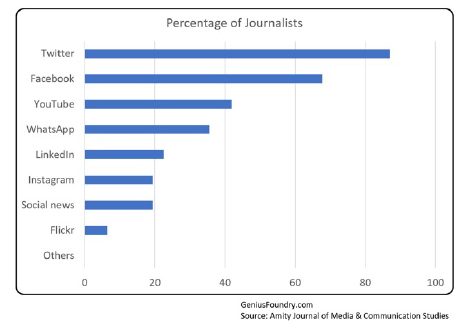
Twitter Impacts You – Even if You’ve Never Used It
Twitter Impacts billions of humans around the planet who have never been on the platform.
Facial Recognition
Apps like Clearview AI have scraped Twitter and other social media platforms to populate its facial recognition software. Facial recognition enables authorities to identify criminals.
Customer Sentiment
Twitter is considered a reliable authority for what people are thinking and feeling about any given topic at any given time at any location. Twitter uses Natural Language Processing (NLP) which enables AI to interpret human attitudes, emotions, opinions, etc. from the text posted in tweets.This information is used by organizations, brands, and governments around the world to guide marketing decisions, legislation, allocate resources, etc.
Law Enforcement
Law enforcement will turn to Twitter when broadcasting news, emergency notifications, and when asking the public for help in locating missing persons or suspects.
Politics
Twitter and social media in general became a channel for political candidates and voters leading up to the 2008 U.S. presidential election. Over the years Twitter has become a forum for political opinions, discussion, and activism. Heads of state use Twitter to communicate directly to the world and one another through Twitter. Twitter has become a popular communications outlet for political parties and candidates to comment on current events and express opinions to their constituents.
10% of Twitter users generate 92% of tweets. According to Pew Research, the political makeup of the most active tweeters is 69% Democratic – Liberal leaning, and 26% Republican – Conservative leaning.
It appears Twitter employees are even more liberal than their users. Twitter is an American company. The U.S. Federal Elections Commission (FEC) reports 99% of Twitter employee political contributions went to Democratic campaigns and committees. Freedom to vote as one wishes is a fundamental right of citizens in democratic republics. Some users became concerned that political leaning of Twitter employees may influence how the platform is managed after Twitter permanently suspended user account @realDonaldTrump of U.S. President Donald J. Trump on January 8. 201, along with accounts of thousands of journalists and activists who had posted photos from a rally in Washington D.C. on the same date. Twitter’s action sparked criticism from conservatives claiming twitter activity during the riots of 2020 and others expressing hate or violence on the platform.
Twitter’s Global Enforcement Team and Trust and Safety Team posted guidelines explaining how it decides what and who are allowed on the platform, stating, “We decide whether a Tweet that would otherwise violate the Twitter Rules is in the public interest…”
These actions appear to have played a part in Elon Musk’s decision to acquire Twitter.
Elon Musk appeared to acknowledged his awareness of political bias on Twitter with an April 27, 2022, tweet stating, “For Twitter to deserve public trust, it must be politically neutral, which effectively means upsetting the far right and the far left equally.”
I am a fierce advocate for cognitive diversity – where difference in opinion, perspectives and backgrounds are essential to solving problems and promoting harmony.
Activism
Social media has permanently changed activism. For many years Twitter was seen as a safe place to express one’s personal views and interact with others around the globe.
Over time, the platform has become a channel for empowering individuals to connect with a cause, participate in discussion and protests from anywhere in the world. This was evident in June 2009 during the Iranian Twitter Revolution when people around the world used Twitter to show their support for the Iranian people. The topic dominated Twitter, and the Iranian government blocked Twitter during the 2009 presidential election out of fear of protests being organized.
A Pew Research 2018 survey revealed Americans believe social media sites like Twitter are very or somewhat important for accomplishing a range of political goals, such as getting politicians to pay attention to issues and for creating sustained movements for social change.
Over the years Twitter has been used to elevate awareness, discussion, and activism. Hashtags like #BlackLivesMatter #MeToo and #MAGA (Make America Great Again) became mechanisms to promote causes and call for boycotts of everything from Twitter itself to products, brands, people, countries, events, legislation, politics, law, and social topics.
Teachers also use Twitter for activism. In the book Social Media: Influences on Education, Tricia Niesz, Ph.D. and Rebecca D’Amato, M.A., M.Ed. of Kent State University states teacher activism is on the rise. Their research revealed how Twitter, Facebook, and other digital networks have been used by educator activists to facilitate on-ground mobilizations while becoming forums for dissent and activism.
Childhood Education
Twitter is used by educators to conduct research, obtain news, connect with others in the education community, and interact with the world as an individual.
Twitter partnered with UNESCO (United Nations Educational, Scientific and Cultural Organization) to provide teachers with guidance on how to use Twitter in the classroom to promote Global Citizenship Education and Media Information Literacy as a form of civic engagement.
The guide explains “Twitter is the platform for public conversation and for sharing information. One can also use Twitter as a news network, as a platform for social activism, free expression, and for research.”
The 36-page guide states “Every citizen is a creator of information/knowledge and has a voice. They must be empowered to access new information/knowledge and to express themselves. MIL is for all — women and men equally — and a nexus of human rights.”
The guide then goes on to outline Twitter rules, explains how to set up a Twitter profile, use hashtags, how to find people to follow, addresses basic security, and how students can manage their digital footprint.
“Media and information literacy (MIL) includes a set of competencies to search, critically evaluate, use and contribute information and media content wisely; knowledge of one’s rights online; understanding how to combat online hate speech and cyberbullying; understanding of the ethical issues surrounding the access and use of information; and engage with media and ICTs to promote equality, free expression, intercultural/ interreligious dialogue, peace, etc.” – Alton Grizzle, Programme Specialist, UNESCO 2018
Research
Unlike most social media platforms, the Twitter history of every user is public and available to be collected for research. Twitter’s data offers insights other social media platforms do not provide.
Countless research studies have been published on human behavior based on Twitter data. Examples include:
Influence analysis of emotional behaviors and user relationships based on Twitter data, published by Tsinghua University, a national public research university in Beijing, China.
The 2022 World Happiness Report, published by the United Nations nonprofit group Sustainable Development Solutions Network, used Twitter as a source to measure human emotion.
Cognitive reflection correlates with behavior on Twitter published by Nature Communications.
“Are we tweeting our real selves?” personality prediction of Indian Twitter users using deep learning ensemble model from Computers in Human Behavior published by the Department of Computer Science and IT, University of Jammu, J&K, India, and Department of Psychology, University of Jammu, India
Assessing the relationship between survey data and Twitter data as measures of public opinion – A methodological pilot study by GESIS – Leibniz Institute for the Social Sciences, Center for Advanced Internet Studies, Heinrich Heine University Dusseldorf, L3S Research Center Hannover, and the University of Bonn.
Twitter offers Academic Researchers access to its data at no cost. Academic Research access includes full-archive search designed to provide non-commercial academic researchers more precise and complete data than available to commercial users access the Twitter API.
Commercial access to Twitter data drives everything from data mining tools to marketing dashboards, social media scheduling apps, journalism, media research, and education.
Data
Twitter is free to users. Twitter collects data from every user, even if they are only reading tweets. Data collected includes tweets, email address, DMs (direct messages), IP address, lists, follows, followers, websites visited, device information, browser, cookies, and search performed on the platform is saved. Users can download and archive this data which is shared with advertisers and partners. Twitter ended the privacy setting that enabled users to turn off sharing of data with Twitter’s business partners in 2020, but users can still turn off personalization.
Like most social media and search platforms, Twitter revenue comes from advertising and licensing access to its API and data. Twitter data is monetized by organizations to help organizations, brands and governments develop strategies. There are a variety of social monitoring apps that organizations use to monitor activity.
Twitter shares device identifiers and cookies with Facebook and Google to help measure the effectiveness of its own ad campaigns on the platforms.
The data provided by Twitter reflects user behavior.
Search
In Spring 2010 I spoke about the relationship between social media and search engines before public acknowledgements from the tech community that the two were connected. In 2010 I presented The Convergence of Social Media & Search atPubcon Las Vegas annual conference. In 2011 Google explained the relationship with Twitter, saying “Since October of 2009, we have had an agreement with Twitter to include their updates in our search results through a special feed…” according toDanny Sullivan in Search Engine Land. And Google stated “Since October 2009, Twitter has provided Google with the stream of public tweets for incorporation into their real-time search product and other uses. That agreement has now expired. We continue to provide this type of access to Microsoft, Yahoo!, NTT Docomo, Yahoo! Japan and dozens of other smaller developers. And, we work with Google in many other ways.” The Google-Twitter relationship was said to have ended in 2011.
There was no public announcement of reinstatement of the relationship between Twitter and search, the search and social media industry speculated. In 2013 I made the case that that the social media and search was alive and well in my Search Engine Watch column Social Signals & Search – Reading the Tea Leaves. Sometime after that conference Twitter and Google acknowledged a relationship. That relationship has evolved over the years. Google used to crawl and index approximately 8,766 tweets per second from Twitter and integrate results into search. In February 2015, the news broke that Google and Twitter had reached an agreement that will provide Google full access to the Twitter “fire hose” that disseminated nearly 9,000 tweets per second in 2015.
Every use of Twitter data reflects what is, and is not, allowed to be shared on the platform.
I think you can see where I’m going … stay with me, there is more.
Artificial Intelligence
AI is driven by data. Machine learning gets smarter over time, learning to make decisions not written into its code. How does AI learn? It is fed mountains of data to “read” and base its intelligence upon. Until AI becomes smarter based its knowledge on the data it is fed.
AI will operate on the data it is fed. Biased, inaccurate, or incomplete data, will influence how AI interprets information, adapts to situations, and determines its next steps. If AI is learning political bias, or any other kind of bias such as race, gender, age, etc. it will impact how AI will view the human population. In other words, garbage in, garbage out. When AI has information that accurately represents all viewpoints, and in the case of Twitter, humanity, it will act accordingly.
Humans at Twitter use ML (machine learning) and DL (deep learning) to empower Twitter AI to determine what is displayed to users. In 2017 Twitter announced how one of their AI teams used deep learning to use underlying algorithms to display content they believe is relevant to each user.
In 2016 Microsoft research and Bing teams developed a chatbot to “experiment with and conduct research on conversational understanding”. The bot, named “Tay” used a combination of AI and editorial written by a team of staff including improvisational comedians to integrate machine learning, natural language processing, and social networks. Within 16 hours of introducing the chat bot on Twitter, Tay had tweeted more than 95,000 times, and a troubling percentage of her messages were abusive and offensive. Microsoft was forced to suspend the Twitter account. This is just one example of how Twitter data is used.
Lex Fridman, an AI researcher working on autonomous vehicles, human-robot interaction, and machine learning used deep learning and a GPT-2 language AI model with 345 million parameters on tweets from various well-known Twitter accounts to create fake, AI versions of the personalities and tweet on their behalf, which he called DeepTweets.
In 2021 Researchers from the World Bank, Berkely, and MIT published “Applying machine learning and geolocation techniques to social media data (Twitter) to develop a resource for urban planning”, which explains how Twitter user data can help create urban designs manage risks for pedestrians and vehicles.
Twitter provides NLP (natural language processing) that is used by data scientists to provide sentiment analysis and “training data” for AI.
There is no publicly available list of all the ways Twitter data is used. In the hands of an innovator like Elon Musk, the treasure-trove of data Twitter possesses certainly could hold more value than advertising revenue.
Seeking “real humans”
In addition to expressing his desire for Twitter to become a town square for the future of humanity to be debated, Elon Musk has announced his intent to authenticate “all real humans.” Musk is rather selective with language, so it is unlikely the statement was erroneous. He said he wanted to authenticate all real humans on Twitter. This comment is likely partially attributed to the “bot” debate that surfaced after the acquisition was announced. I believe there is much more to this remark that suggests a much grander vision for Twitter.
Twitter currently influences news, search engine results, research, governance and legislation, elections, how companies, individuals, and organizations communicate with the world, how we educate humans, and how we train artificial intelligence (AI).
I believe AI is a significant reason, if not the primary reason Elon Musk sought to acquire Twitter.
Elon Musk is no stranger to Artificial Intelligence. Musk has warned that humans face the risk of becoming house pets to AI. Musk’s answer to this existential threat is the implantation of AI computers on human brains. This is not a dream. He co-founded Neuralink Corporation, a neurotechnology company developing a machine-human interface to be implanted on the human brain.
For Twitter to be a reliable source for AI it must accurately represent the diversity of humans across the human population. This would require the free exchange of ideas from all perspectives. Twitter is not currently considered a platform that embraces diversity of thought without impunity (illegal action prohibited, of course). Hence, the focus on freedom of speech.
What will the future look like?
Today, October 28, 2022, Elon Musk officially completed the purchase of Twitter. If there’s one thing we’ve learned over the years about Musk, is that you just never know what he’s really thinking. He is not one to sit idly on the sidelines. He would never have invested so much of his own wealth and convinced others to finance the deal if he didn’t have a plan.
Innovators are continually planning for the next big thing.
The future of Twitter, social media, search, news, speech, and every aspect of the human experience these elements impact is unknown. Disruption and innovation can be a very good thing.
In a tweet, Elon Musk stated he was not buying Twitter “to make more money I did it to try to help humanity, whom I love”.
We now just have to wait to see Elon Musk’s vision unfold to learn exactly what that looks like.
What do you think?
Has your opinion changed since Musk announced his intent to purchase Twitter?
Will you be more, or less, interested in exploring Twitter under new leadership?
I’d love to hear your thoughts.
What About You?
Have you ever wanted to take a page from Elon Musk’s book to become more bold and innovative?
